How to create an eco-friendly garden: 15 ways to go green
Looking for expert advice on how to create an eco-friendly garden? These easy ideas will inspire you to make sure your plot is beautiful and kind to the environment

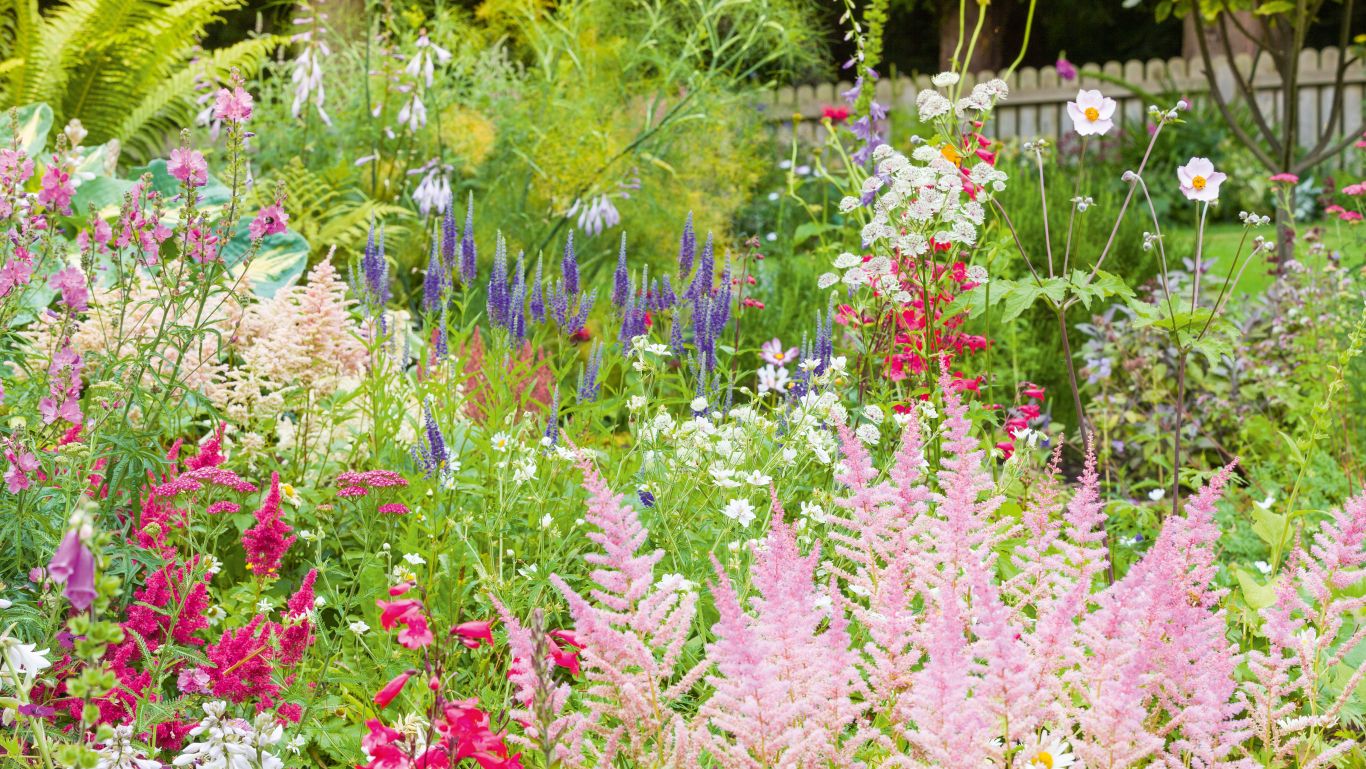
Learning how to create an eco-friendly garden is easier than you might think – just a few simple changes can make a big difference to your garden's impact on the environment. It’s easy to feel overwhelmed by the huge environmental problems threatening our planet at the moment and you could be forgiven for wondering how anything you do in your own garden could possibly make a difference.
But if all the gardens in the UK were put together, they would cover an area bigger than the Lake District and the Peak District combined – so the overall impact of each of us making just a few small changes has the potential to be really significant. And best of all, creating a garden that’s more pollinator- and wildlife-friendly, that uses fewer natural resources – including water and peat – and that doesn’t pollute the environment really isn’t that difficult. Read on for how to achieve it, then make sure you check out our guide to sustainable gardens for more advice on how to transform your garden in an eco-friendly way.
GREEN HOMES MONTH
To celebrate Earth Day, we've put together our Green Homes Month. You'll find inspiring ideas, practical advice and expert tips on easy ways to make your outdoor space more eco friendly to help you do your bit for the environment.
1. Plant for pollinators
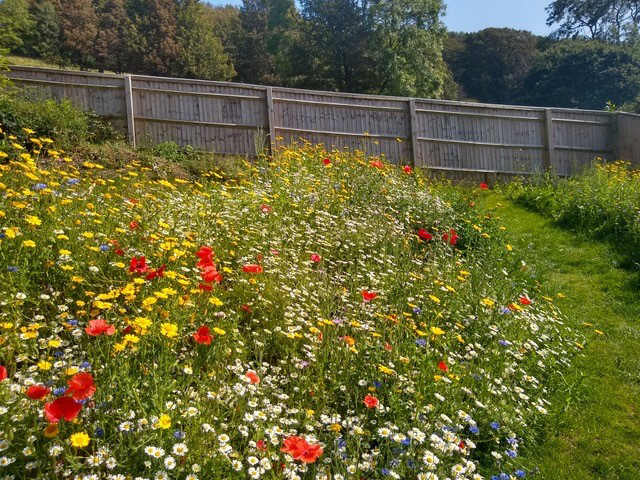
The recent decline in the number of bees and other pollinating insects could have serious consequences for us all because so many food crops depend on them. So one of the easiest tips for how to create an eco-friendly garden is to choose plenty of bee-friendly plants, and including a variety of different flower shapes to suit different feeding habits – some bees have very long tongues and love the tubular flowers of foxgloves, whereas other pollinators prefer the open flowers of echinacea and buddleia, for example. Avoid ‘double’ flowers with layered petals – these sometimes have no nectar or pollen at all but even when they do, the extra petals make it difficult for pollinators to access them.
As beneficial insects love wildflowers, you could even plant a mini meadow in a sunny part of your garden. Try the lovely Bee and Pollinators wildflower seed mix from The Grass People which has good balance of annuals, perennials and grasses.
2. Give wildlife a home
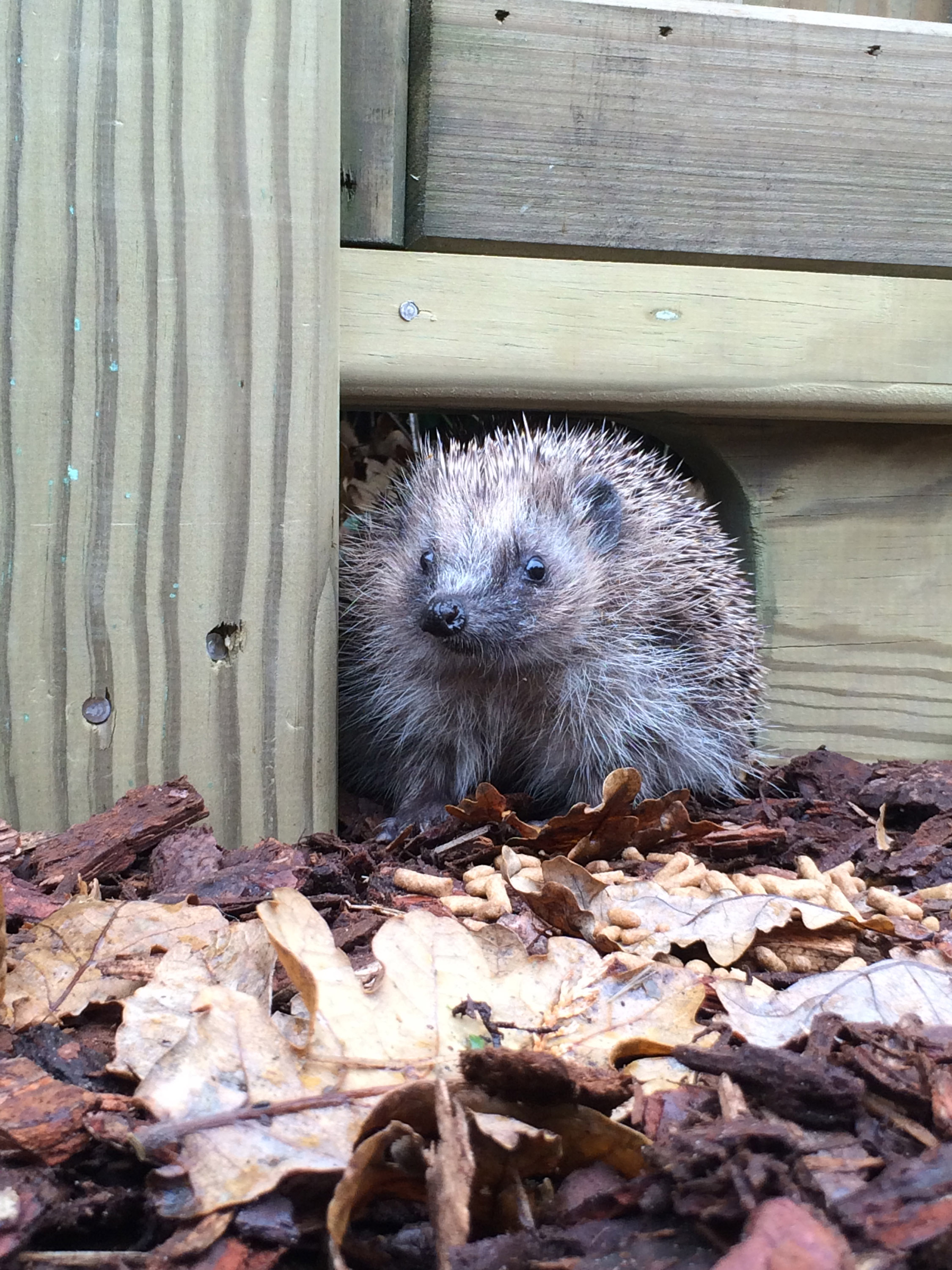
A perfectly manicured garden is very unwelcoming to wildlife so consider allowing at least a small section of yours to become a little overgrown – leave a patch of nettles in a hidden corner, and don’t clear up all the wood after you’ve pruned a tree, for example.
Put up bird and bat boxes, and follow our guide on how to make a bug hotel – this can be as simple as lengths of hollow garden canes tied together, making the perfect home for a number of different bee species.
There are some lovely hedgehog homes on the market now but if your garden perimeter has fences, the hogs won’t be able to get in. Make a small 15 x 15cm hole in the base of one fence panel if you can and encourage your neighbors to do the same, to make hedgehogs’ nocturnal journeys easier.
A hedge is far more wildlife friendly in general than either garden fence ideas or a wall, offering nesting sites for birds and protection from predators to all sorts of small mammals. But if a fence or wall is the only option, clothe it with climbers – ivy, for example, is a rich source of nectar in autumn and winter when there’s little food around.
Another great top on how to create an eco-friendly garden is to encourage wildlife by building a small pond – in fact, even just water in a large pot or half barrel will yield results. Within hours, you will find beneficial insects and birds drinking from the water, and frogs, toads and even newts are likely to soon follow. There's tips on how to build a garden pond in our guide.
3. Conserve water

We use a lot of water in our gardens, but much of it is wasted. Very few shrubs and perennials in the border need extra water once they’re established, but for those that are newly planted or that do tend to dry out in hot weather, be sure to water the roots and not the foliage. Check out guide to the best garden hose for our top picks.
If you're serious about how to create an eco-friendly garden, rather than watering little and often, which encourages roots to stay near the surface where they will dry out more quickly, water very thoroughly once a week. This forces the roots to go down deeper and find moisture for themselves. One watering can per plant per week should be enough – if you’re using a hose, count how many seconds it takes to fill a can and replicate that for each plant. Applying a thick mulch of organic matter around the base of plants in spring will go along way to help lock in moisture too.
Plants in pots will need more regular watering, although water-retaining granules that you sprinkle into the potting compost will help keep it moist for longer. The best solution is an automated watering system that ensures all plants – in pots, in borders and in the greenhouse – get water only when they need it. Gardena’s Micro Drip System range uses driplines that work a bit like an underfloor heating system in combination with soil moisture or rain sensors, and they can cut water usage by up to 70%. All you have to do is enter the commands on the Gardena app and the system will do the rest.
One of the biggest water-wasting culprits in the garden is the lawn sprinkler. Instead, follow our tips on how to mow a lawn – have the blades set higher in hot weather as this will stop the soil drying out so quickly and keep the grass greener for longer, meaning watering is not necessary.
When it rains, make sure you save every last drop by fitting a water butt on every downpipe. You don’t have to stick with the usual boring green version, as there are some very attractive designs around now, and many of them double up as planters too.
If you have the space, you could even consider an underground rain tank. Larger ones can easily collect enough water for the average garden, and you can use them water to flush your WC too.
4. Go peat free

Peat has been a major component of potting compost for decades, but extracting it can destroy unique ecosystems that take centuries to form, causing irreparable damage to natural habitats, and as it forms very slowly, it isn’t sustainable. But there are now several good peat-free and reduced-peat composts for potting available. Miracle-Gro’s Premium Peat Free All Purpose Compost contains coir, an organic component that provides a good PH balance, and it also incorporates a smart-release fertiliser that will keep plants fed for up to three months.
In many areas of the UK, compost is now being produced from local waste and sold back to residents. In Yorkshire, Yorganics Compost uses household waste that’s processed, shredded, broken down and rolled several times, producing enough heat to make it weed-free. It’s suitable for use on fruit trees and bushes, vegetable plots, flowers, trees and shrubs, hanging baskets and growing plants from seed and it makes a good lawn feed and dressing too.
To give plants an extra nutrient boost, it can be mixed with well-rotted manure. It comes in single 40 litre bags (£5), or in an 800kg dumpy bag , £90, and is available at many local outlets or from logsdirect.co.uk. Look out for similar schemes in your own neighborhood.
5. Plant a tree
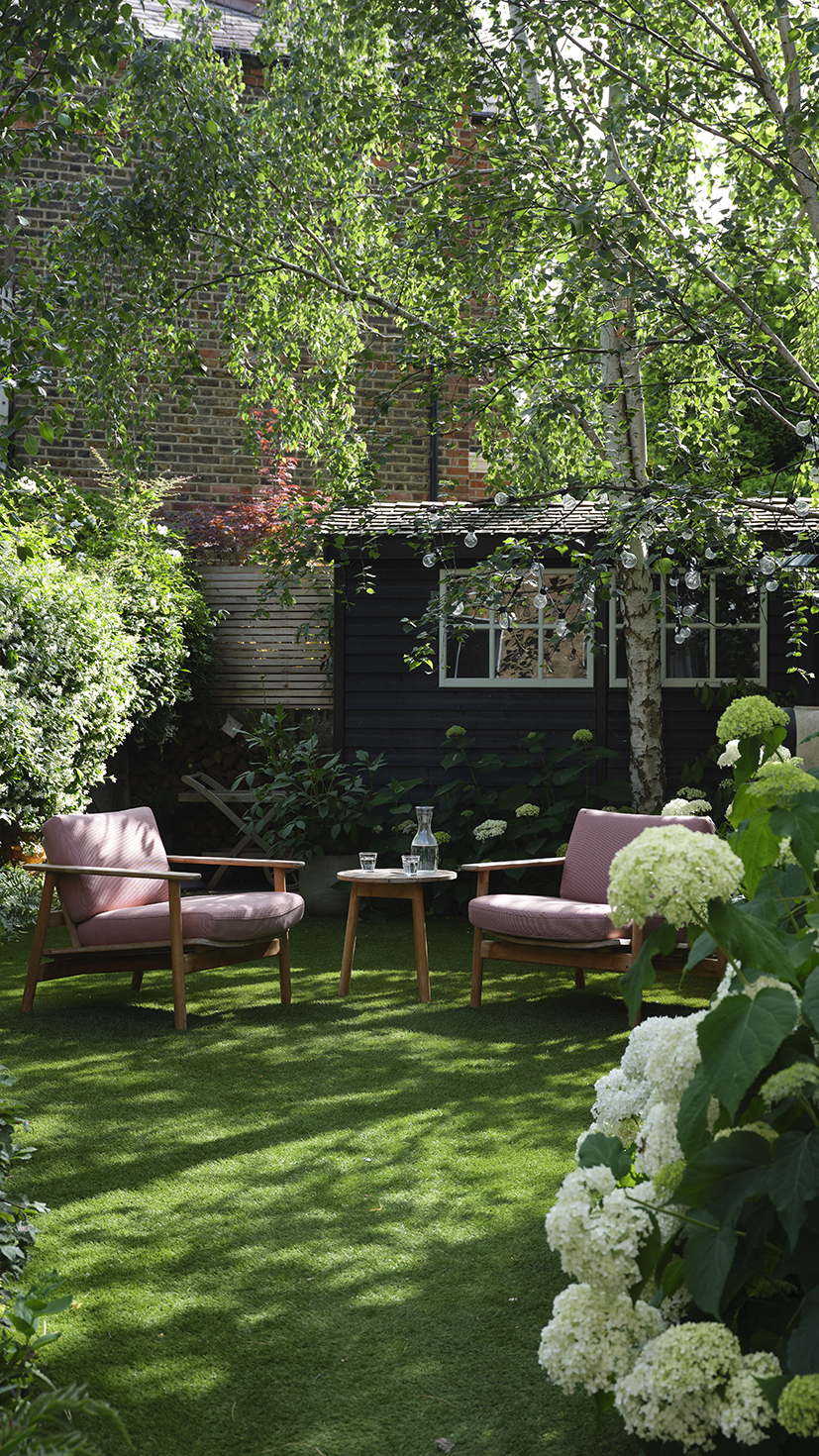
According to recent research, gardens with trees are more attractive to wildlife than those without them, so adding some to your space is key if you want to learn how to create an eco friendly garden.
Even in the tiniest garden, there’s usually room to squeeze in a small tree - try a Japanese maple (Acer palmatum), a crab apple such as the upright ‘Golden Hornet’, or the diminutive Magnolia stellata, for example. Some experts are predicting that in 30 years’ time the UK could have the same climate as the south of France. If that’s the case, a tree with a dense leaf canopy will be invaluable for providing shade, reducing the need for watering.
Discover the best trees for small gardens in our guide.
6. Recycle and re-use
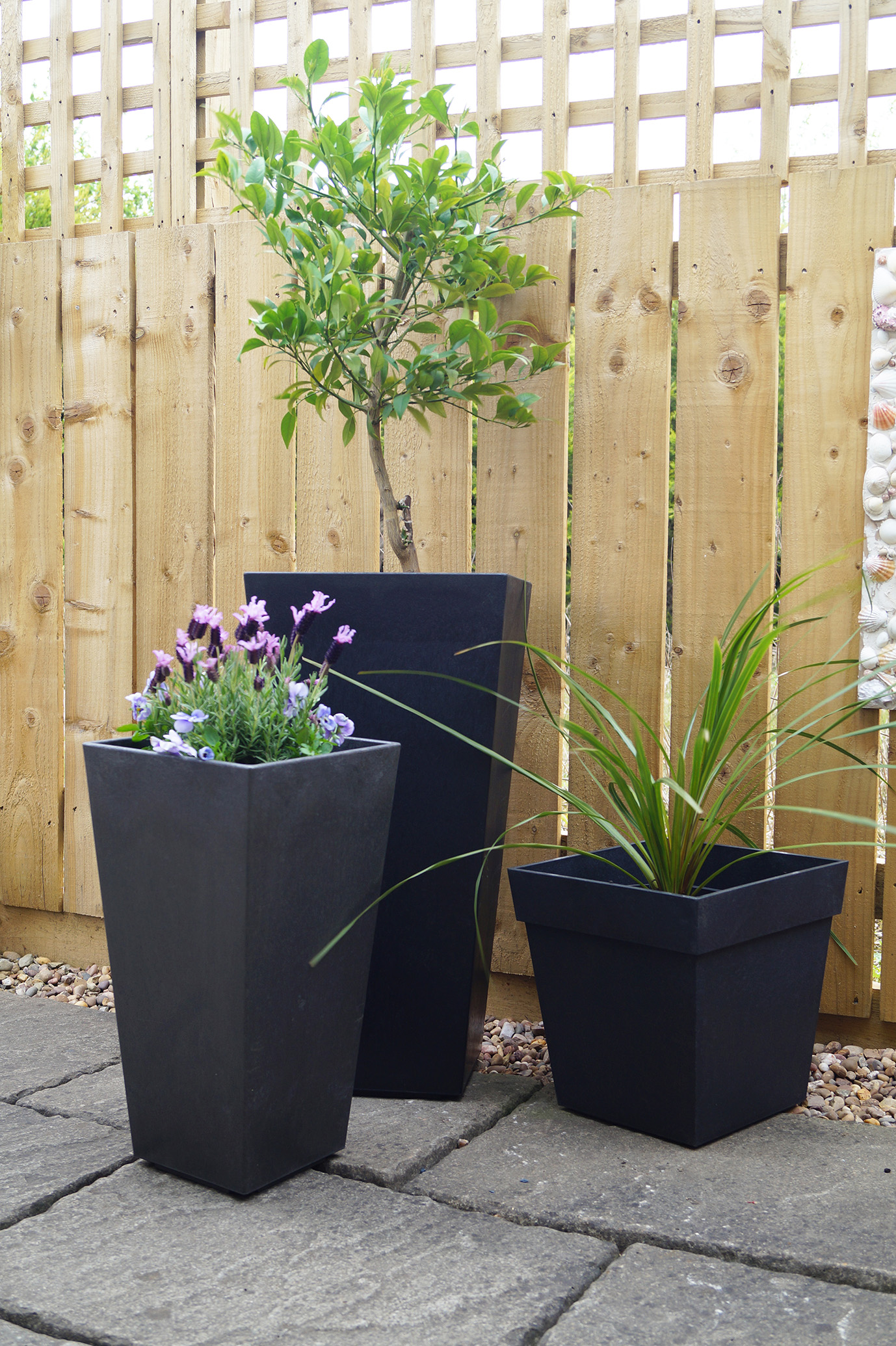
Plastic pots are one of the biggest issues if you're following advice on how to create an eco-friendly garden. Many plastic pots, especially the ubiquitous black ones, can't be recycled and end up as landfill. Some garden centers now offer a recycling service for plastic pots, but re-use any that you already have as many times as possible, for sowing seeds and growing on seedlings. When you’re buying new plants, seek out one of the growing number of nurseries that will tip plants out of their plastic pots and wrap them in recycled paper for you to take home.
Instead of buying new pots for seed-sowing, use old egg boxes and the cardboard inner tube of loo rolls – they work brilliantly for this and will biodegrade if you plant them straight into the soil once the plants are big enough to go out.
If you’re buying new equipment and accessories, opt for those made using recycled materials. Primeur’s ECO Garden range of stepping stones, borders, decking tiles and pots, for example, uses recycled rubber tyres. Apart from the fact that the tyres would otherwise take upwards of 80 years to decompose in landfill sites, the joy of using recycled rubber is that it’s non-slip, doesn’t crack or fade in hot weather, and is also lightweight. Of course you don’t always have to buy new – a rummage around reclamation yards is a fun way of finding pre-loved garden accessories that you’re unlikely to see elsewhere.
Paving made from recycled concrete aggregate is now widely available too, and this can be a good option for your eco landscaping ideas.
7. Grow your own food
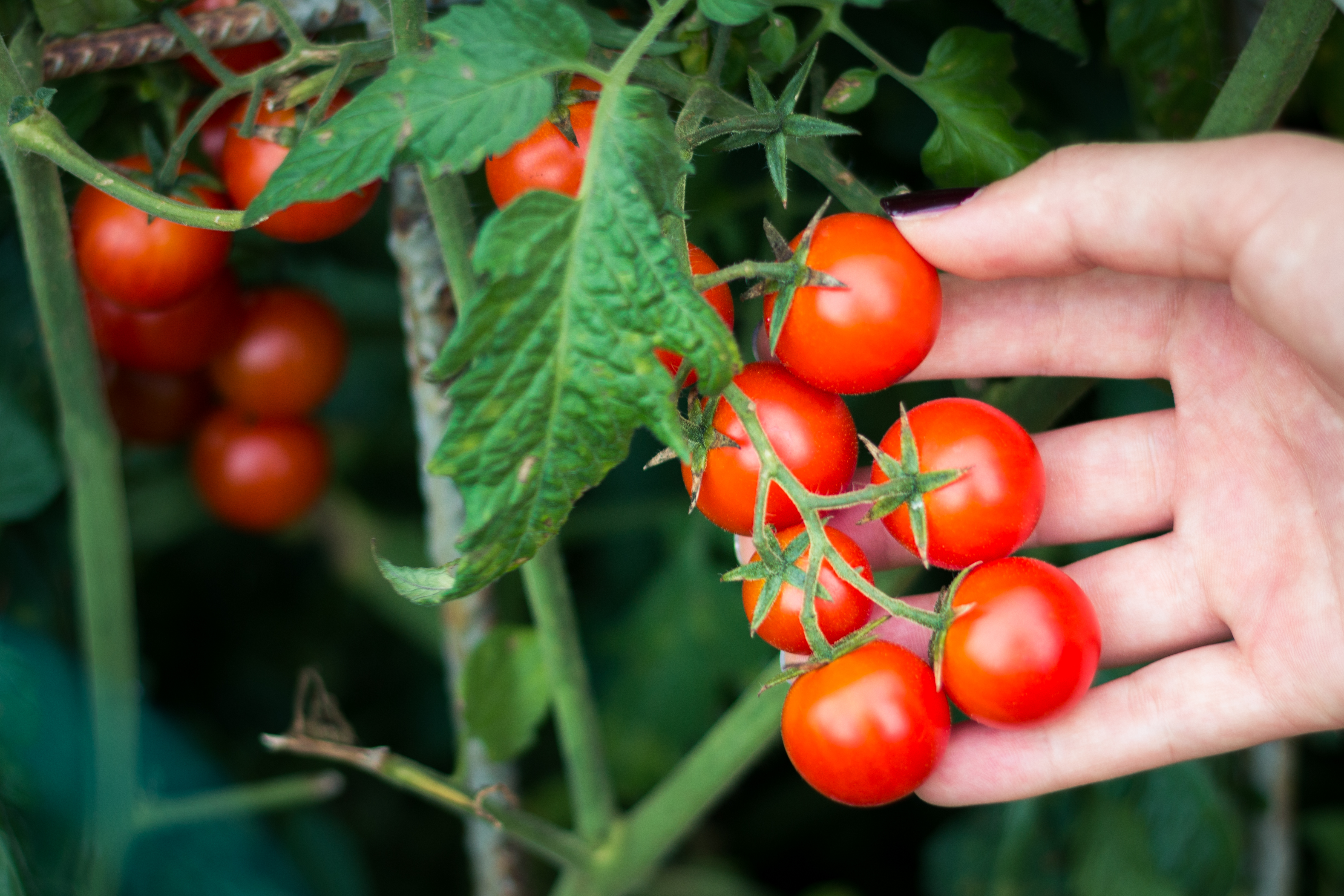
If you want to reduce your environmental impact as well as cutting your supermarket bills, why not turn part of your garden into a veg patch and start growing your own fruit and vegetables?
Supermarket produce has often spent days traveling hundreds of miles before it reaches the shelves, but nothing beats the taste of peas and beans cooked within minutes of being picked, and a homegrown tomato, still warm from the sun, is a revelation – plus, there are no food miles involved. Include a native cherry or apple tree in your grow-your-own plans, if space allows.
We've got guides on everything from how to grow tomatoes to how to grow beetroot in our Grow Your Own hub.
8. Make your own compost

There’s something incredibly satisfying about making your own compost from grass clippings and veg peelings that would otherwise go to waste, and it’s straightforward to do. You can buy special bins that keep it all neat and tidy, but all you really need when thinking of how to create an eco friendly garden is a corner of the garden that's out of the way but not too shady.
As for how to compost, add your grass clippings, plus pile in all your veg peelings, prunings, hedge trimmings, shredded newspaper and cardboard – even the contents of the vacuum cleaner bag. You can compost autumn leaves too, but keep them separate as they decompose more slowly.
Then wait for the magic to happen, turning the compost pile occasionally with a fork. In six months to a year you should have a lovely, crumbly, friable mixture that’s ready to use for mulching, keeping moisture in the soil and improving its texture, reducing the need for watering and improving the health of plants.
If you want to speed things up, why not invest in an Aerobin Hot Composter? It harnesses the natural process of aerobic (or hot) composting, and the work is done by healthy decomposer micro-organisms. These need food (carbon & nitrogen), air and water and when they have these in the correct balance, compost is produced very quickly – within 12 weeks, in ideal conditions. There's more tips on this method in our guide to hot composting.
9. Go organic
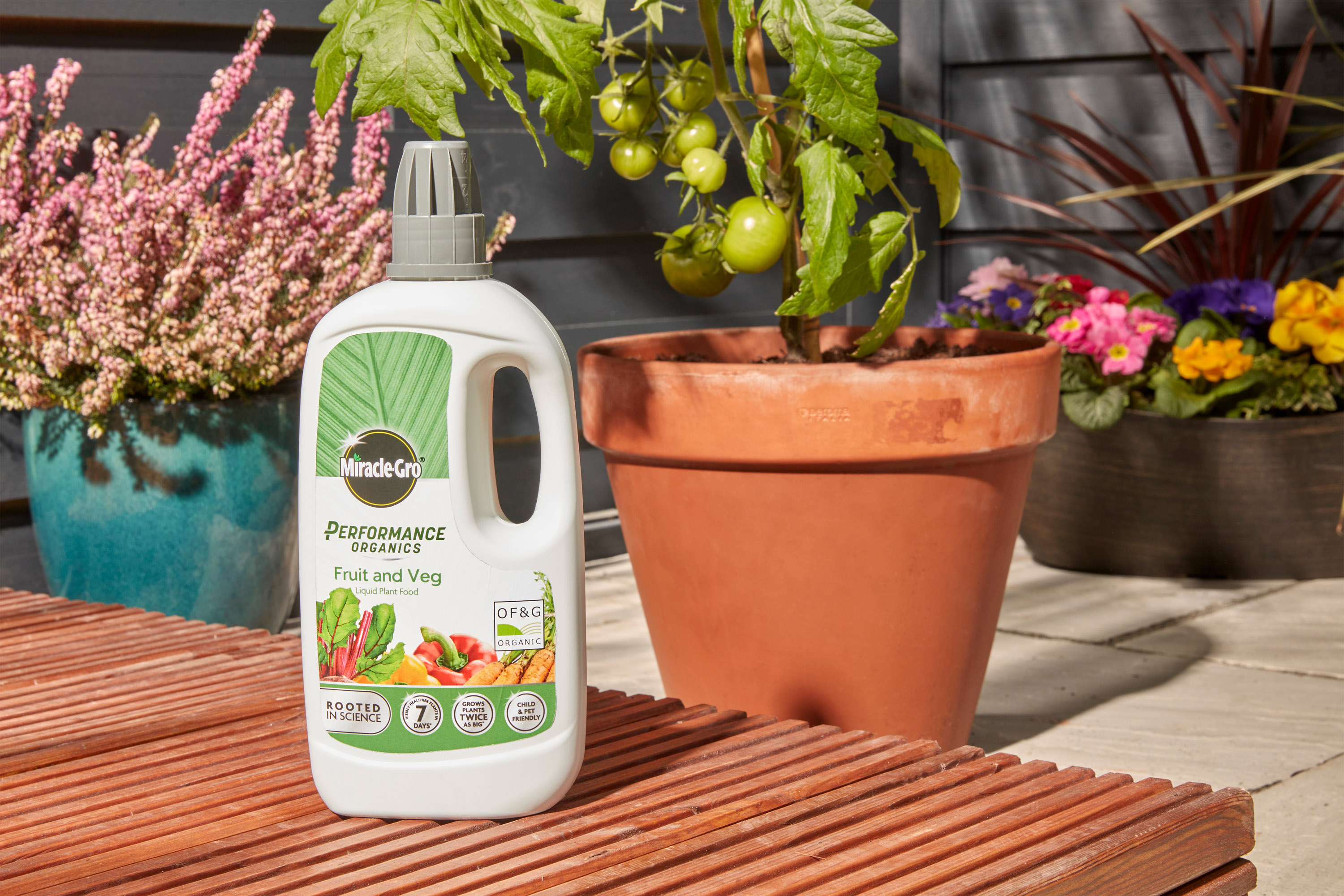
By choosing organic products to feed and treat your plants, you'll be reducing the chance of inadvertently harming beneficial insects and you won’t be adding unnecessary chemicals to your soil either.
There are now organic versions of everything from slug controls to fertilizer and soil conditioner. Give an extra boost to fruit and veg crops with a liquid feed such as MiracleGro Performance Organics Fruit & Veg Liquid Concentrate Food that comes in a 100% recycled and recyclable bottle.
10: Use local materials
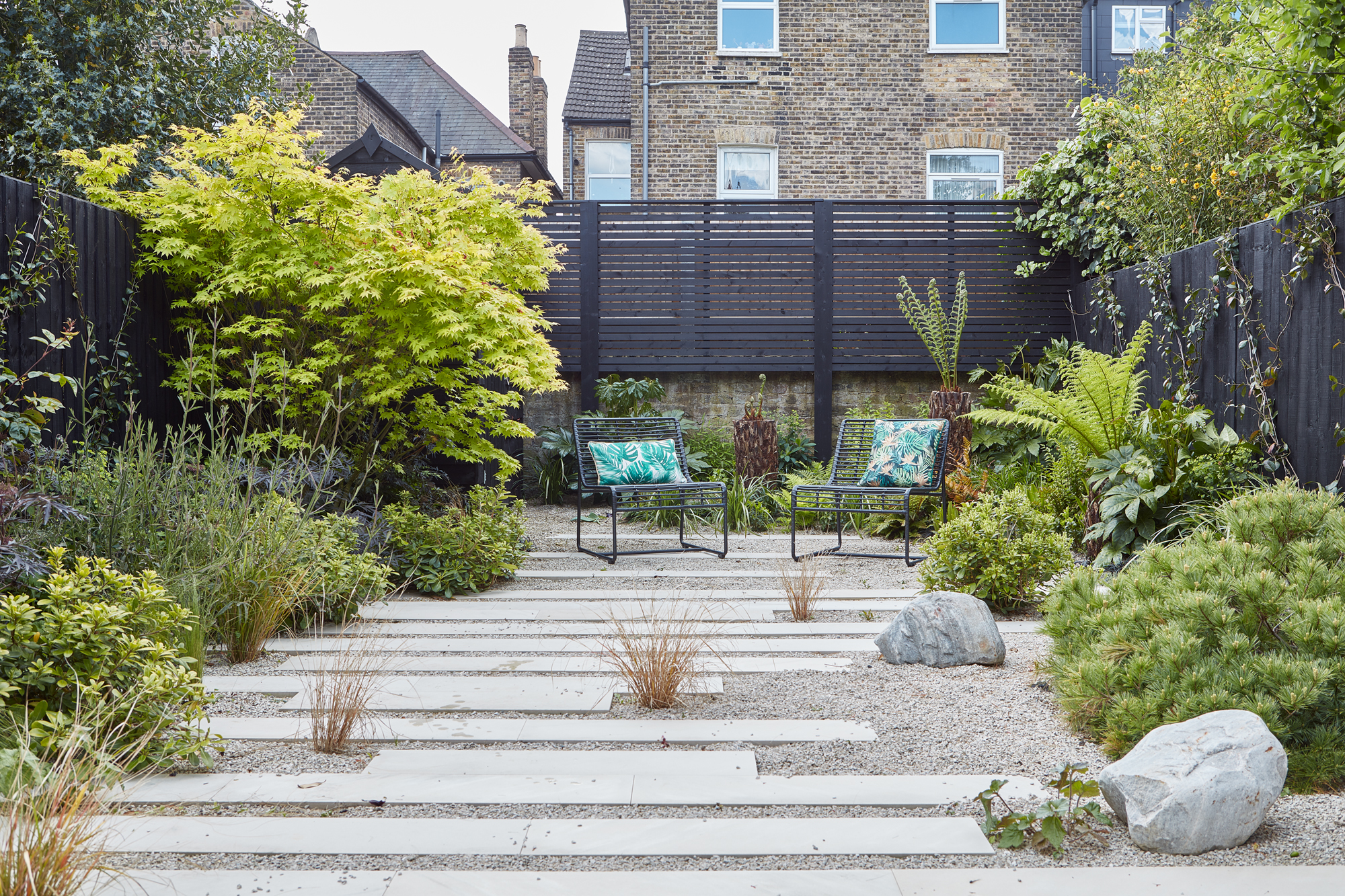
When it comes to combining how to create an eco friendly garden and making the right landscaping choices, buying paving and bricks that haven’t travelled hundreds or even thousands of miles to get to your plot will help reduce your garden’s carbon footprint considerably – and support nearby businesses too.
What’s more, as well as being environmentally friendly, local materials also sit better in the landscape than if they’re brought in from elsewhere so your revamped garden will look more natural and established from the start.
When you’re buying timber products and decking in the UK, look for a Forest Stewardship Council (FSC) or Programme for the Endorsement of Forest Certification (PEFC) logo – that way, you can be sure the wood originates from certified plantations.
There's more inspiration for your plot in our landscaping ideas.
11. Go native
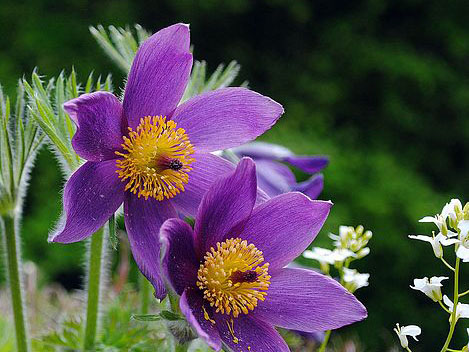
One of the best ways for how to create an eco-friendly garden is to include native plants in your borders and attract wildlife to your space. They are usually easy to grow and look after, and tend to be more resistant to pests and diseases than non-native varieties. Do a little research online before buying plants from nurseries and garden centers to see which originate from your region or country.
12. Green up your walls
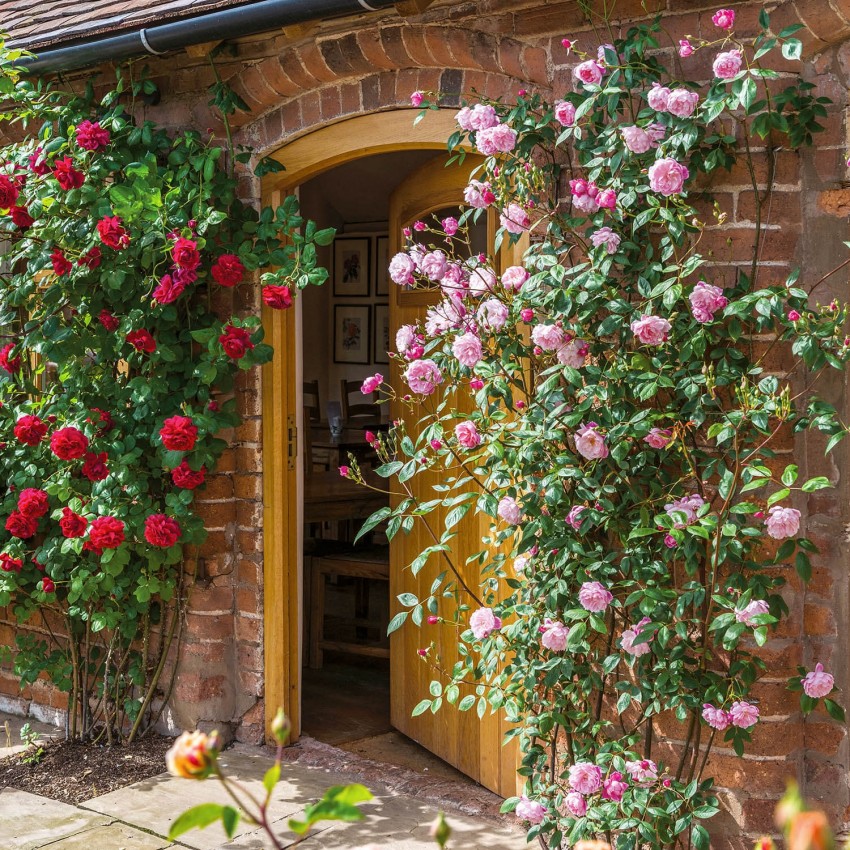
Training the best climbing plants up the walls of your house doesn’t only look good, they also trap air, helping to insulate your home and potentially reduce your heating costs. This can be especially useful in older properties that are hard to insulate, and on the colder north side of properties.
Conversely, climbers on a south-facing house wall will deflect heat from the sun and can even help to reduce the urban heat island effect in towns and cities. Use climbers such as wisteria, or slower-growing wall shrubs – orange-, red- or yellow-berried pyracantha can look stunning.
Head to our guide on how to create a living wall for more ideas on vertical gardening.
13. Ditch the chemicals

Many gardeners are now choosing not to use chemical insecticides and pesticides in the garden when there are natural alternatives. Greenfly can be dispatched from plants with a blast of water from a hose, caterpillars can be picked off by hand (or, better still, cover the plants with garden fleece early in the season), slugs can be kept under control with small dishes of beer placed near vulnerable plants – and if you encourage hedgehogs into your garden, you’ll soon find the slug population significantly decreases anyway. We've got plenty of tips on how to get rid of slugs in the garden in our guide too.
Many common diseases such as blackspot on roses can be prevented by regularly spraying plants with an organic tonic – SB Plant Invigorator is a particularly good one to try. Onions and chives grown around roses can help combat blackspot too.
14. Make your own fertiliser

Rather than buying expensive ready-made fertilizers, you can make your own plant-friendly nettle or comfrey tea cheaply and easily. Grow a patch of comfrey or nettles specially for this purpose, or collect nettles locally. Drop them into a bucket of water (one part leaves to ten parts water) then set them aside for a few days. The resulting liquid makes a wonderful plant food for free.
When both nettles and comfrey are in flower, they will attract beneficial insects too (nettles, in particular are loved by small tortoiseshell and peacock butterflies whose larvae feed on the stems).
15. Leave your lawn
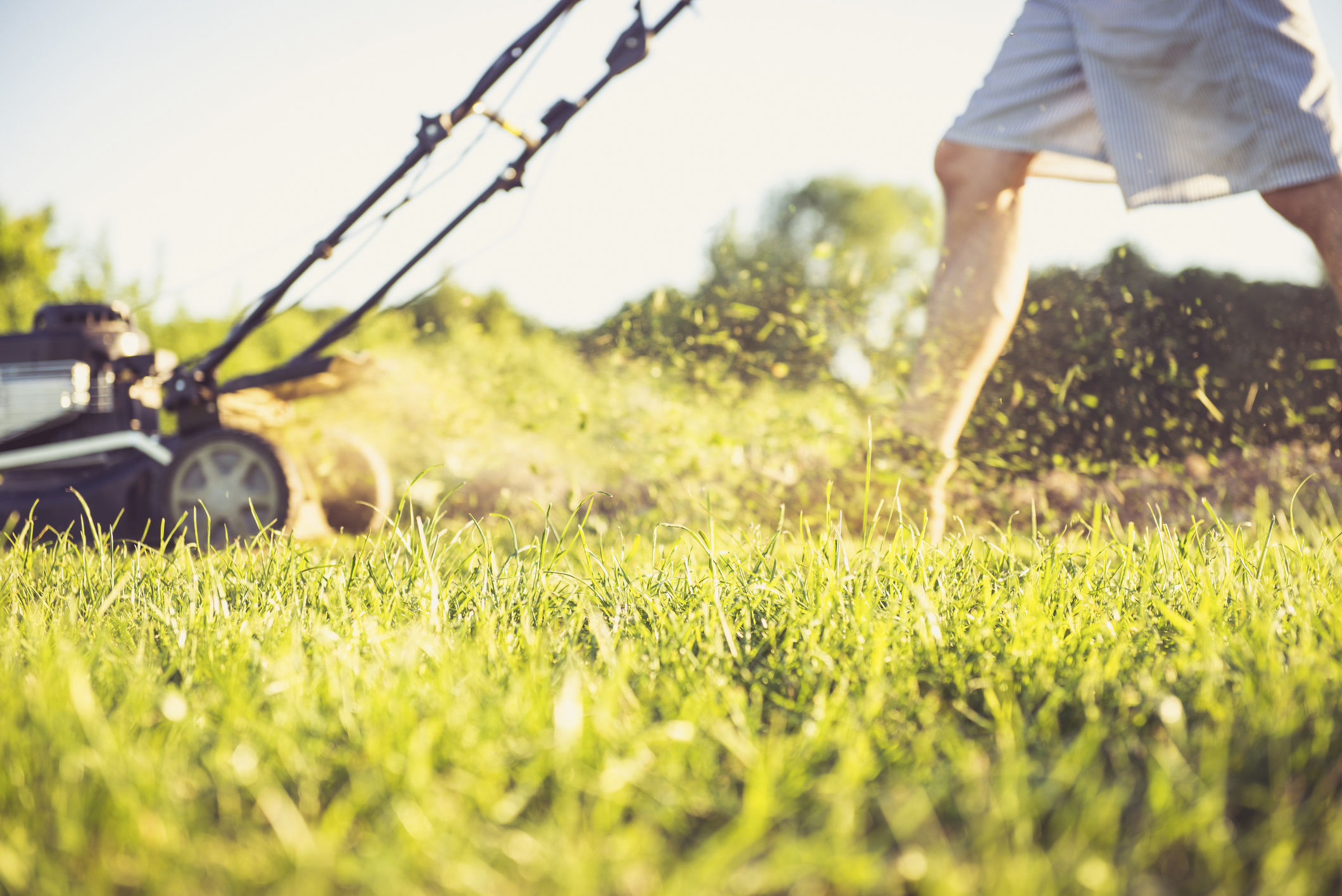
One of the best ideas for how to create an eco-friendly garden and attract pollinators to your plot is to leave some or all of your lawn to grow without mowing it until the end of the summer. Mowing a path through or around will ensure it looks planned rather than simply unkempt!. You may be surprised at how many wildflowers appear among the grass in even just the first season.
Even if you can’t bear to let your lawn grow out completely, consider waiting longer than usual before getting out the mower – lawn weeds such as dandelions provide pollen early in the season while white clover is always a big hit with honeybees, and red clover is the flower of choice for bumblebees.
When you do mow your lawn, try ‘grasscycling’ – leaving grass trimmings on the lawn after mowing to provide a natural fertilizer for the grass and help trap moisture in the soil. Using the best lawn mower with a mulching facility is an easy way to do this – they re-circulate and re-cut the grass clippings, creating a fine mulch that’s returned to the lawn where it quickly decomposes, putting precious nutrients back into the soil. If you’re feeling lazy, the best robot lawn mowers will automatically mow your lawn and mulch it at pre-set times without you having to lift a finger!

Sarah is a freelance journalist and is lucky to be able to write about her two main passions: gardening and food. She recently took on an allotment too, and is really loving growing all her own fruit and veg then bringing it home to try out in new recipes for her food and gardening blog, A Cook's Plot.

